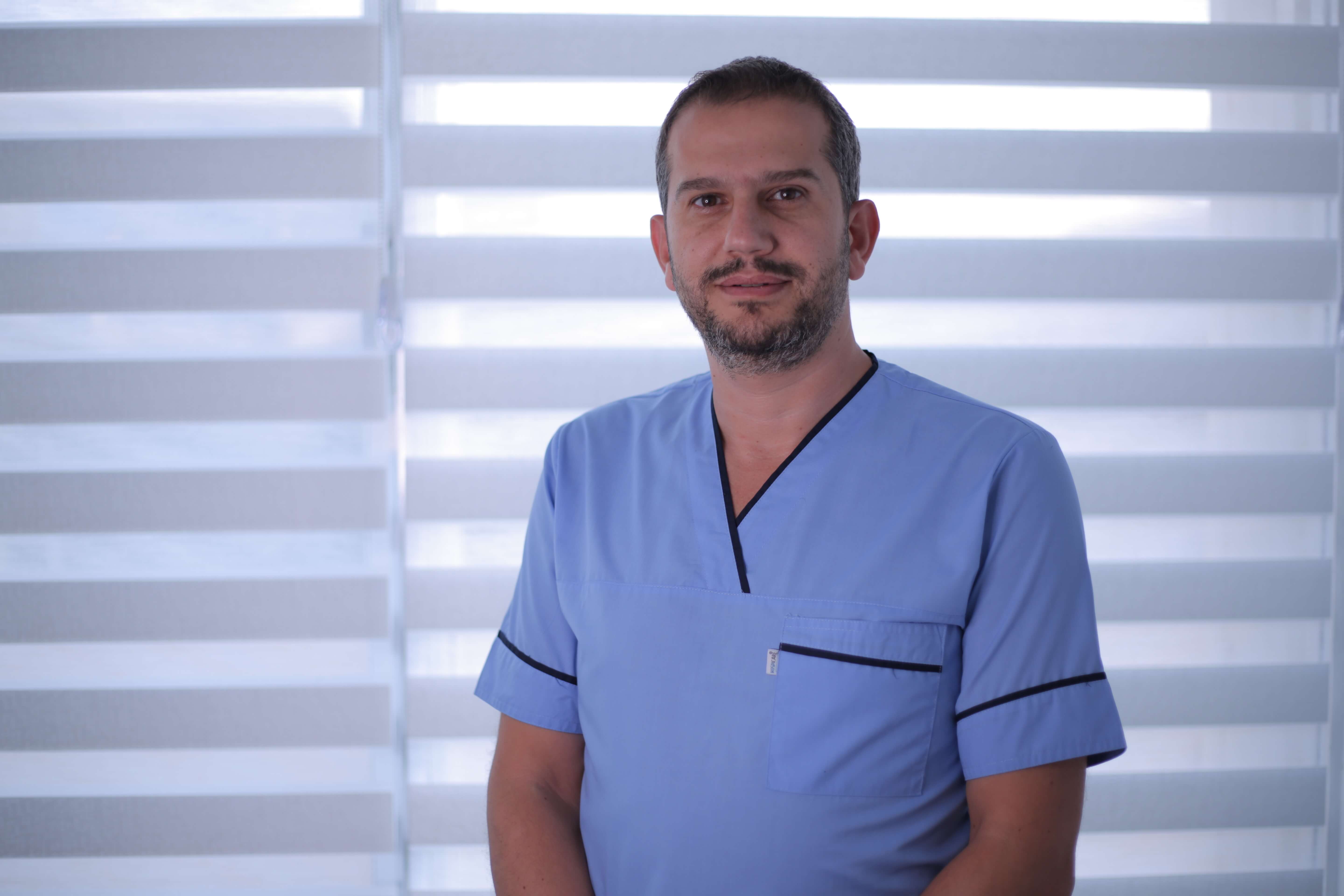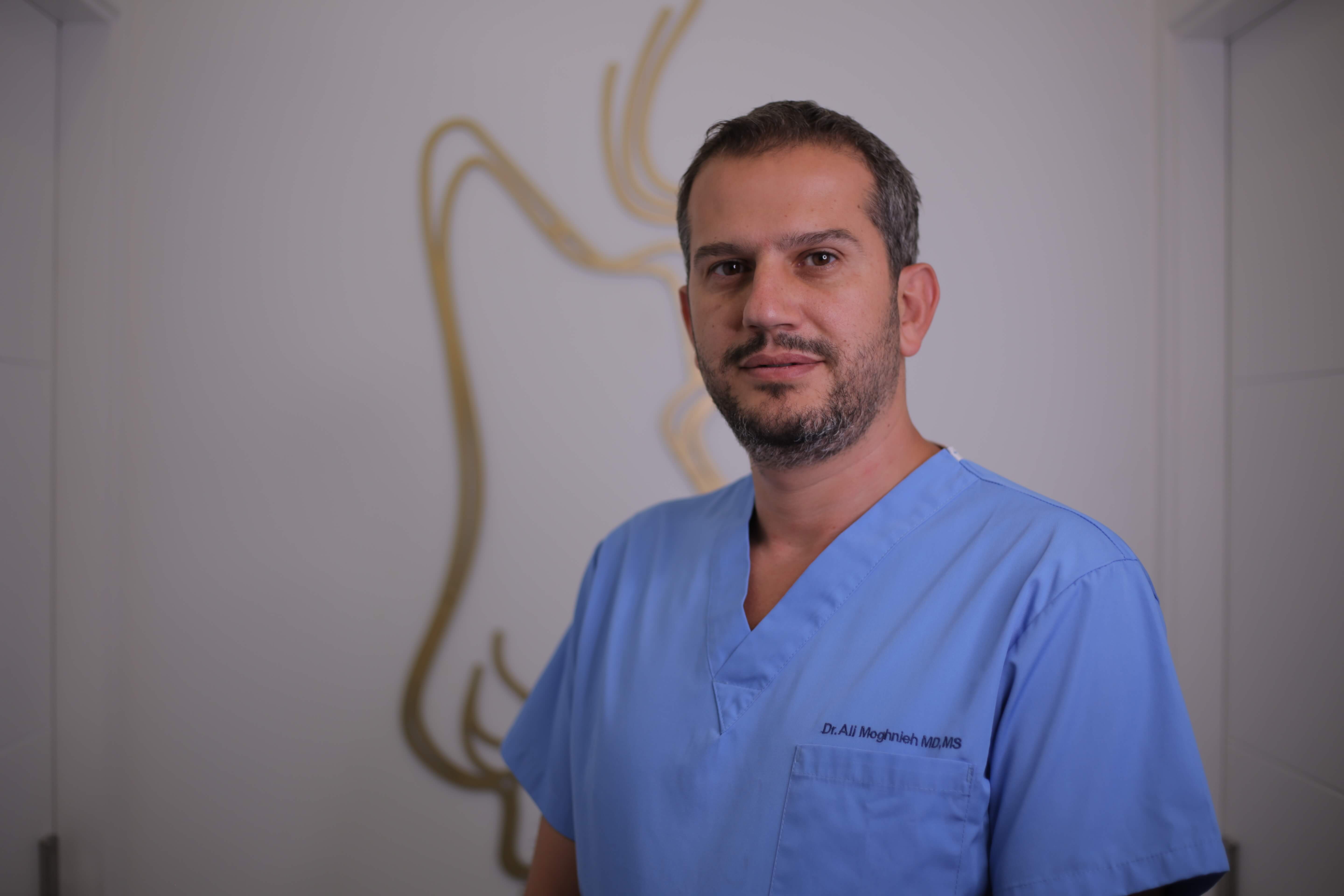Health
Medistic Center: Dr. Ali Moghnieh Treats Pain with Groundbreaking Medical Innovations

Finding relief from chronic pain is often a complicated and time consuming daunting process. Luckily, there are doctors who specialize in Interventional Pain Management like Dr. Ali Moghnieh, who treats acute and chronic pain through non-operative treatment and minimally invasive techniques of musculoskeletal injuries and regenerative medicine.
Committed to his patients’ pain relief, Dr. Moghnieh provides his medical services at Medistic Center Lebanon, a medical center with a team of professionals, each specializing in a different area, holistically coming together for the long lasting well being of patients.
Dr. Moghnieh is an Anesthesiologist by background. He earned Diploma of Acute & Chronic Pain Physician from Paris Descartes, Diploma of Ultrasound-Guided Regional Anesthesia from Lebanese University and Diploma of Interventional Pain management from Montpellier University.
Interventional pain management (IPM) is a medical subspecialty which treats pain with invasive interventions, to directly address the root cause. IPM is generally used when pain is extremely severe and it halts one’s ability to perform the simplest daily tasks. It provides long lasting relief in some cases, and permanent relief to patients suffering from chronic headaches, bone pain, back pain, muscle pain, neck pain and more.

Interventional Pain Management Treatments
- Epidural injections could be inserted in all areas of the spine allowing the anesthetic and steroid medications to relieve pain or diagnose a specific condition.
- Nerve root, and medial branch blocks are injections done to determine if a specific spinal nerve is the source of pain, and it can also be used to decrease inflammation and pain. The type of nerve block will depend on each patient’s treatment plan. Some are minimally invasive and may only last for some hours or days. Yet, other nerve blocks require surgical procedures, and may be long-term or permanent.
- Rhizotomy is a method in which pain signals are “turned off” through the use of heated electrodes that are applied to specific nerves that carry pain signals to the brain. For some patients, this process can provide pain relief for 6 to 12 months. Your doctor will most likely recommend physical therapy, during these pain-free months.
- Facet joint injections are used to provide pain relief if facet joints are the source of pain.
- Pulsed Radio Frequency Neurotomy (PRFN) is a minimally invasive process that disables spinal nerves and stops them from sending pain signals to the brain. It is usually used to treat lower back and neck pain, especially when pain is caused by arthritis.
- Spinal cord stimulation is the use of electrical impulses that are utilized to block pain from being recognized in the brain.
You may need several IPM techniques or a combination of different medical practices, but an expert, such as Dr. Moghnieh, will find the right plan for you. Dr. Moghnieh also specializes in regenerative medicine, which focuses on rebuilding and restoring diseased tissue. Regenerative Medicine can help the body to repair tissue at the source of the pain.
With Medistic Center, there is now an inclusive professional place that local patients can count on for a wide range of reliable treatments. All the appreciation goes out to Dr. Moghnieh and the other doctors and practitioners at this innovative medical center. Dr. Moghnieh’s colleagues make a diverse, experienced, and professional team that the center prides with: Dr. Nour Abou Yehya, an anesthesiologist and pain management expert; Malak Aburaya, a children’s life coach; Zeina Al Zein, a life coach and Hamza Abboud, an athlete rehabilitation coach and strength and conditioning coach. There will also be more consultants providing wellness services including acupuncture, cupping, dry needling and shockwave therapy.
Health
Dr. Rajesh Bindal: Revolutionizing The Future Spinal Care

Spinal care is undergoing a period of change, driven by patient-centric demands, emerging technologies, and a more profound understanding of musculoskeletal health. Healthcare providers such as Dr. Rajesh Bindal are rethinking traditional surgical methods, focusing instead on minimally invasive techniques that prioritize faster recovery and lower complications.
With tools like telemedicine and wearable tech, access to care is broadening, allowing for continuous monitoring and remote management of spine conditions. Simultaneously, data-driven diagnostics and AI are enhancing precision in treatment planning, while interdisciplinary collaboration ensures that care is comprehensive and personalized.
Minimally Invasive Techniques and Their Benefits
Minimally invasive spine procedures are becoming the preferred choice in modern care. Surgeons now rely on techniques that allow smaller incisions, leading to less tissue damage and quicker recovery times. Patients often return to daily routines faster compared to those who undergo traditional open surgeries, and the need for less general anesthesia further reduces associated risks.
Procedures such as endoscopic discectomy and laser-assisted spinal decompression are gaining traction in outpatient settings. These options carry fewer risks and often reduce the need for prolonged hospital stays. As a result, both patient satisfaction and clinical efficiency have improved immensely.
What once required long recovery periods is now being treated with same-day procedures. This shift is not only changing how surgeries are performed but also how treatments are integrated into overall patient wellness. The trend also reflects a broader shift toward value-based care models within the healthcare system.
Diagnostic Technology and Data-Driven Insights
High-resolution imaging tools like MRI and CT scans have become central to accurate spine assessments. These technologies provide detailed views of spinal structures, helping specialists detect abnormalities that might be missed through physical exams alone. In complex or chronic cases, such imaging helps trace the root of persistent symptoms more effectively.
Artificial intelligence is adding another layer of precision by analyzing patterns in imaging data and patient history. With AI-assisted tools, clinicians are developing more targeted treatment plans that account for individual anatomy and risk factors. Early intervention is now more achievable thanks to these innovations. When spine conditions are caught in earlier stages, patients often avoid surgery altogether or benefit from less invasive interventions.
Expanding Access Through Telemedicine and Remote Care
Virtual spine consultations are helping bridge the gap between patients and specialists, especially in rural or underserved regions. Video-based appointments allow for quicker evaluations, timely follow-ups, and better continuity of care without requiring travel. These innovations have proven especially useful during times when in-person visits are limited, such as public health emergencies.
Wearable devices that track posture, movement, and pain levels are now contributing to real-time monitoring. These tools give providers valuable data that can influence treatment decisions, especially when in-person visits are limited or unnecessary. Remote apps also help patients stay consistent with prescribed rehabilitation exercises.
Despite these advancements, some cases still demand hands-on assessment or surgical intervention. The key lies in blending digital convenience with careful clinical judgment to ensure patients receive the most appropriate care. Providers must be trained to know when to escalate care to in-person settings, ensuring patient safety is never compromised.
Putting Patients at the Center of Spinal Care
Modern care is moving away from one-size-fits-all approaches. More providers are focusing on understanding a patient’s lifestyle, goals, and emotional well-being as part of the treatment strategy. Addressing the mental and physical aspects of chronic spine pain leads to more sustainable outcomes. This approach empowers patients to become active participants in their recovery.
Integrated care teams that include physical therapists, pain management specialists, and behavioral health professionals are becoming more common. This collaboration helps patients stay engaged in their recovery and builds a stronger therapeutic alliance between providers and individuals. Response to treatment tends to improve when patients feel heard and supported throughout the process.
Training, Innovation, and Future Directions
Medical training is evolving alongside advancements in spine care. Surgeons and clinicians are learning to work with robotics, navigation systems, and biologics that weren’t part of traditional education just a decade ago. Simulation-based learning and virtual reality platforms are also being used to enhance skills.
As new therapies emerge—from regenerative injections to AI-assisted surgical robotics—ongoing education is crucial. Providers must not only master new tools but also develop communication skills that allow them to explain complex options in relatable terms. This new wave of technology demands both technical proficiency and empathetic patient interaction.
Looking ahead, policy reforms may further shape access and innovation in spine treatment. These changes could influence everything from insurance coverage to how new procedures are adopted in mainstream care. Continuous collaboration between clinicians, tech developers, and policymakers will be essential to ensure the best outcomes for patients.
-

 Tech4 years ago
Tech4 years agoEffuel Reviews (2021) – Effuel ECO OBD2 Saves Fuel, and Reduce Gas Cost? Effuel Customer Reviews
-

 Tech6 years ago
Tech6 years agoBosch Power Tools India Launches ‘Cordless Matlab Bosch’ Campaign to Demonstrate the Power of Cordless
-

 Lifestyle6 years ago
Lifestyle6 years agoCatholic Cases App brings Church’s Moral Teachings to Androids and iPhones
-

 Lifestyle4 years ago
Lifestyle4 years agoEast Side Hype x Billionaire Boys Club. Hottest New Streetwear Releases in Utah.
-

 Tech6 years ago
Tech6 years agoCloud Buyers & Investors to Profit in the Future
-

 Lifestyle5 years ago
Lifestyle5 years agoThe Midas of Cosmetic Dermatology: Dr. Simon Ourian
-

 Health6 years ago
Health6 years agoCBDistillery Review: Is it a scam?
-

 Entertainment6 years ago
Entertainment6 years agoAvengers Endgame now Available on 123Movies for Download & Streaming for Free
